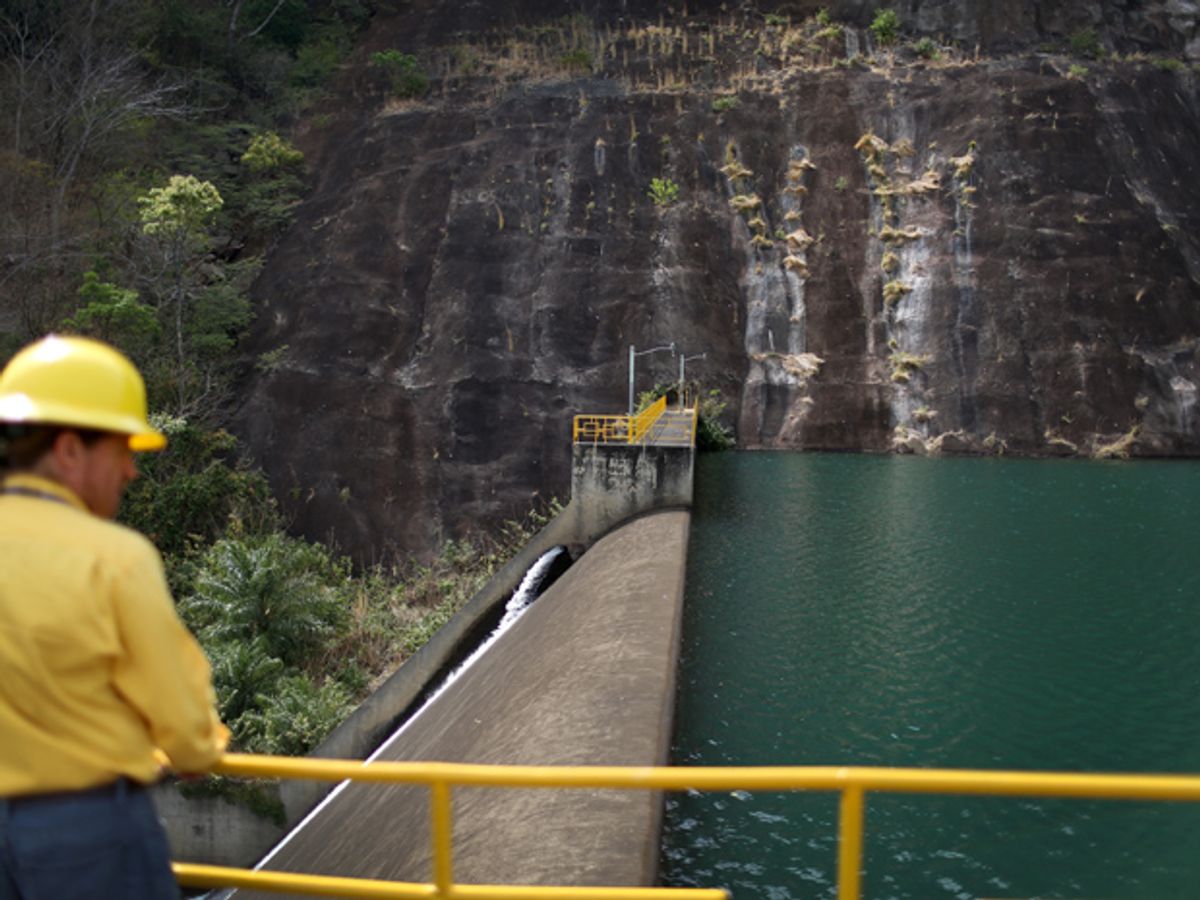Costa Rica has been coasting on nothing but renewable power since the start of 2015, according to news from the Costa Rican Electricity Institute (ICE).
The study found that during January, February, and at least the first half of March, the nation’s grid has been running on mostly hydropower, with geothermal, wind, biomass, and solar rounding out the power generation mix. Costa Rica has not had to use any of its oil reserves for electricity.
Heavy rainfall has allowed four hydropower plants to run at maximum capacity. The ICE estimates that the country will continue to see mostly renewable production in the second quarter, with power prices dropping further; a price reduction of up to 15 percent is expected for consumers.
On average, hydropower comprises about 75 percent of Costa Rica’s electricity generation, and geothermal, at about 12 percent, is the country’s second-leading source of power according to the International Energy Agency.
Costa Rica has an ambitious goal of becoming the first carbon-neutral nation by 2021, although some have questioned how much political support there is for the goal within that timeframe.
The country, which has successfully reforested a large portion of its land, has been voted the “greenest and happiest” country on Earth by the New Economics Foundation. Reforestation has been a priority, but so have large-scale renewable energy projects.
There are plans to open the government-controlled electricity market, according to the UN. There are also incentives for renewable power plants over 7 megawatts. Additionally, government is offering incentives for biofuels.
In 2013, Costa Rican government announced three geothermal projects valued at nearly US $1 billion, with major funding coming form the Japanese International Cooperation Agency. Costa Rica has also been increasing its wind capacity, doubling it to about 150 megawatts at the end of 2013, from 74 megawatts in 2008. In 2014, an additional 49 megawatts of wind power came online.
Costa Rica is not alone in pushing the envelope and achieving impressive gains in clean energy. Last year, Germany met nearly three-quarters of its peak power needs with renewable energy—primarily wind and solar. Another country that already gets nearly all of its electricity from hydro, Norway, is also diversifying its renewables portfolio by investing in wind.
Other countries such as Australia and the United States are adding renewables at an impressive rate, but it still may not be enough to unseat fossil fuels as the primary source of electricity there in coming decades.



